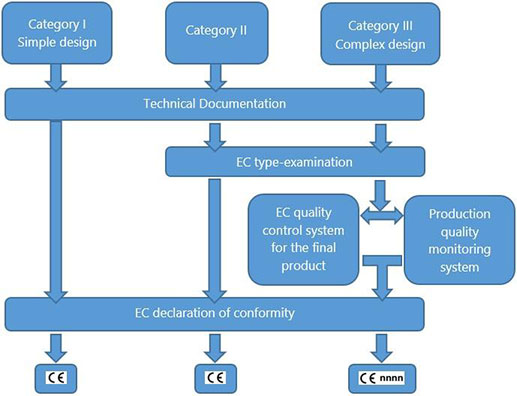Summary
The Personal Protective Equipment Regulation is a European one but it is one of the most stringent enforcement regulation relating to PPE in the world which is why the level of European PPE compliance is typically very high, especially relating to the Category 3 (Complex) which Arc Flash Protective Clothing is in.
This post will explain the purpose, scope and timescale of the Personal Protective Equipment Regulation.
As of 21 April 2018, The Directive 89/686/EEC was repealed by the new Regulation (EU) 2016/425 of the European Parliament and of the Council of 9 March 2016 on personal protective equipment.
Personal Protective Equipment (PPE) regulation covers “Any device or appliance designed to be worn or held by an individual for protection against one or more health and safety hazards”.
All manufacturers of personal protective equipment are required to meet common standards of quality and performance. In addition, the regulation lays down a series of basic health and safety requirements which can be complied with directly for simple equipment and which form the basis of a series of standards for the design and performance of more complex equipment. The regulation makes no distinction between PPE used for work purposes and that used for leisure. The directive came fully into force in June 1995; non-compliant equipment must not be sold, this includes old stock manufactured before the directive came into force.
The manufacturer is responsible for ensuring that the regulation is adhered to. Failure to comply can lead to up to 3 months in prison and/or a fine of up to £5000. Furthermore, manufacturers can be required to recall and replace any equipment found to be faulty.
Purpose
The aim of the PPE Regulation is to provide common standards for PPE throughout the EEA and provide health and safety requirements, which all PPE must comply with to ensure the health and safety of users.
Scope
The PPE Regulation covers any equipment designed to protect against safety and health hazards. In addition, this covers combined PPE intended to protect against multiple hazards, and interchangeable components essential to its satisfactory functioning. “(a) a unit constituted by several devices or appliances which have been integrally combined by the manufacturer for the protection of an individual against one or more potentially simultaneous risks; (b) a protective device or appliance combined, separably or inseparably, with personal non-protective equipment worn or held by an individual for the execution of a specific activity; interchangeable PPE components which are essential to its satisfactory functioning and used exclusively for such equipment.”
All protective equipment is required to comply, whether it is intended for use at work or in the home
Responsibility for deciding if a product is PPE rests with the manufacturer. Manufacturers may seek guidance from various sources, including trade associations, notified bodies, the BERR and independent legal advisors.
The Directive defines three classes of PPE -
Category I - Simple design PPE:
Category II - PPE which is neither simple nor complex:
Category III - Complex design PPE
The equipment in categories I and III are listed in the Regulation. These lists are comprehensive and any PPE that does not clearly fall within the descriptions of either category I or III, will fall within Category II.
Timescale
The Directive came into force on 1 January 1993 with a transitional period ending on 30 June 1995. As of this date, all PPE as defined in the Regulation must comply and be CE marked accordingly. The amending regulations concerning CE marking and the transitional period are also now fully in force. Equipment which is not compliant with the health and safety requirements of the Regulation must no longer be sold even if it is old stock. The Regulation does not require suppliers to scrap un-marked PPE so long as it is compliant with the other requirements of the Regulation, but distributors and retailers must keep any applicable invoices etc to prove the equipment pre-dates 1 Jul 1995.
Manufacturing and Certification Requirements
For all PPE, the Regulation lays down requirements for technical documentation and CE marking and for the manufacturer to prepare and make available a Declaration of Conformity.
- PPE Category I does not require certification but must be manufactured in accordance with the essential health and safety requirements of the Directive.
- PPE Category II must be independently type tested by a Notified Body to demonstrate that it meets the requirements of the applicable standards. It is not necessary for the production procedure to be independently assessed, but regular samples of production must be submitted for testing.
- PPE Category III must be independently type tested by a Notified Body to demonstrate that it meets the requirements of the applicable standards. It is not necessary for the production procedure to be independently assessed, but regular samples of production must be submitted for testing AND must be manufactured under an assessed quality management system to ensure on-going production performance matches type tested sample
Do you or your team have a requirement for Category III PPE? See our full collection here and learn more about PPE safety standards here.





